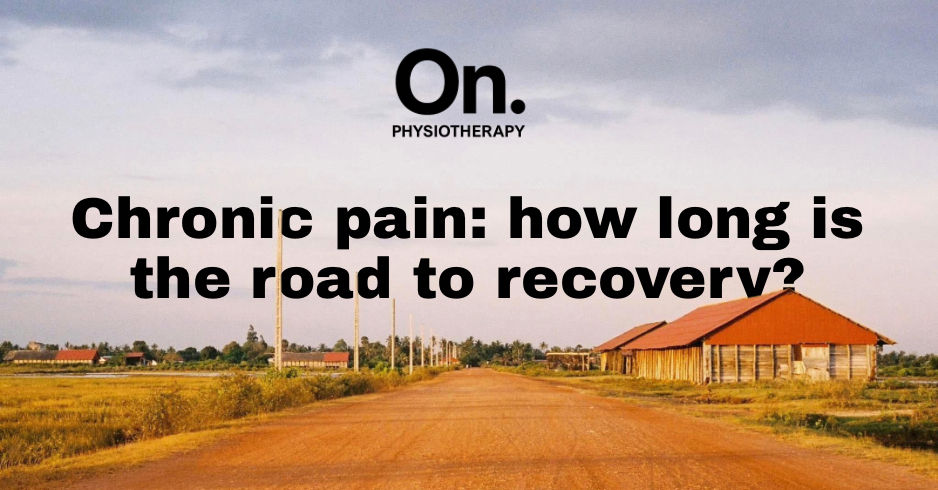Catastrophising ! The fast track to chronic pain
- Yannick Sarton

- Oct 17, 2024
- 3 min read
Updated: 3 hours ago
How you think about your pain matters. If you believe it means severe damage, anticipate disaster or expect no improvement, you’re more likely to reduce movement and increase protection. This avoidance can de-condition muscles, stiffen joints and feed a chronic pain cycle.
Pain is shaped by the brain, not only the body
Pain is shaped by the brain, not only the body
Pain is a protective signal created by the nervous system. While tissue injury can trigger pain, the brain continuously interprets information coming from the body, past experiences, beliefs, and emotional context. This is why two people with the same injury can experience very different pain levels.
When pain is interpreted as a sign of danger, damage, or irreversible harm, the nervous system becomes more reactive. Over time, this heightened sensitivity can maintain pain even when tissues are healing normally.
When thoughts amplify pain
How you interpret pain has a direct effect on behaviour. If pain is perceived as a serious threat, movement is often avoided. Rest increases, activity decreases, and the body becomes progressively less tolerant to load.
Fear leads to avoidance
Avoidance may feel protective in the short term, but it comes at a cost. Reduced movement leads to muscle weakness, joint stiffness, and lower confidence in the body. This creates a vicious circle where normal sensations feel increasingly painful.
The chronic pain loop
As movement decreases, sensitivity increases. Pain then feels more intense, reinforcing fear and negative expectations. Without intervention, this loop can persist long after tissues are no longer injured.
Catastrophising as a key driver of chronic pain
Catastrophising refers to a pattern of thinking where pain is constantly monitored, exaggerated, and perceived as uncontrollable. It usually involves three elements: rumination, magnification, and helplessness. Patients who catastrophise tend to report higher pain intensity, greater disability, and slower recovery. This is not because their pain is imaginary, but because the nervous system is under constant threat perception. Modern physiotherapy directly addresses this factor as part of treatment.
What physiotherapy does differently
Understanding your pain
We assess not only movement and strength, but also how pain started, how it behaves, and how you interpret it. This gives a complete picture of the physical and perceptual components involved.
Education that restores confidence
Clear explanations help patients understand that pain does not always mean damage. Learning why the body is safe to move reduces fear and lowers nervous system reactivity.
Progressive movement exposure
Instead of avoiding movement, we reintroduce load gradually. This rebuilds strength, restores tolerance, and teaches the nervous system that movement is no longer a threat.
Real-life reintegration
Recovery is not complete until daily activities, work tasks, and sport are resumed. These are integrated step by step, respecting both physical capacity and confidence.
In-clinic and online care with the same standards
Whether you attend sessions in person in BKK1, Phnom Penh, or choose online physiotherapy from abroad, the clinical approach remains the same. Both formats are structured, personalised, and based on current scientific understanding of pain.Local sessions allow hands-on assessment and guidance, while online sessions provide flexibility and continuity for international clients. In both cases, the goal is identical: reducing fear, restoring movement, and preventing pain from becoming chronic.
Conclusion
Catastrophising is not a personality flaw. It is a learned response to pain that can be changed. By addressing both the physical and cognitive aspects of pain, physiotherapy helps break the cycle that keeps pain alive. Understanding pain is often the first step toward recovery, and guided movement is what turns understanding into lasting change.
I provide structured and evidence-based online physiotherapy for patients worldwide, offering clinical assessment, diagnosis, and personalised rehabilitation.
I also receive patients in person at my physiotherapy clinic in Phnom Penh.
You can begin your online physiotherapy session through the dedicated platform:
More information on clinical standards and supporting evidence is available here:
Yannick Sarton, MSc Physiotherapist
International Online Physiotherapy & In-Clinic Care, Phnom Penh



Comments